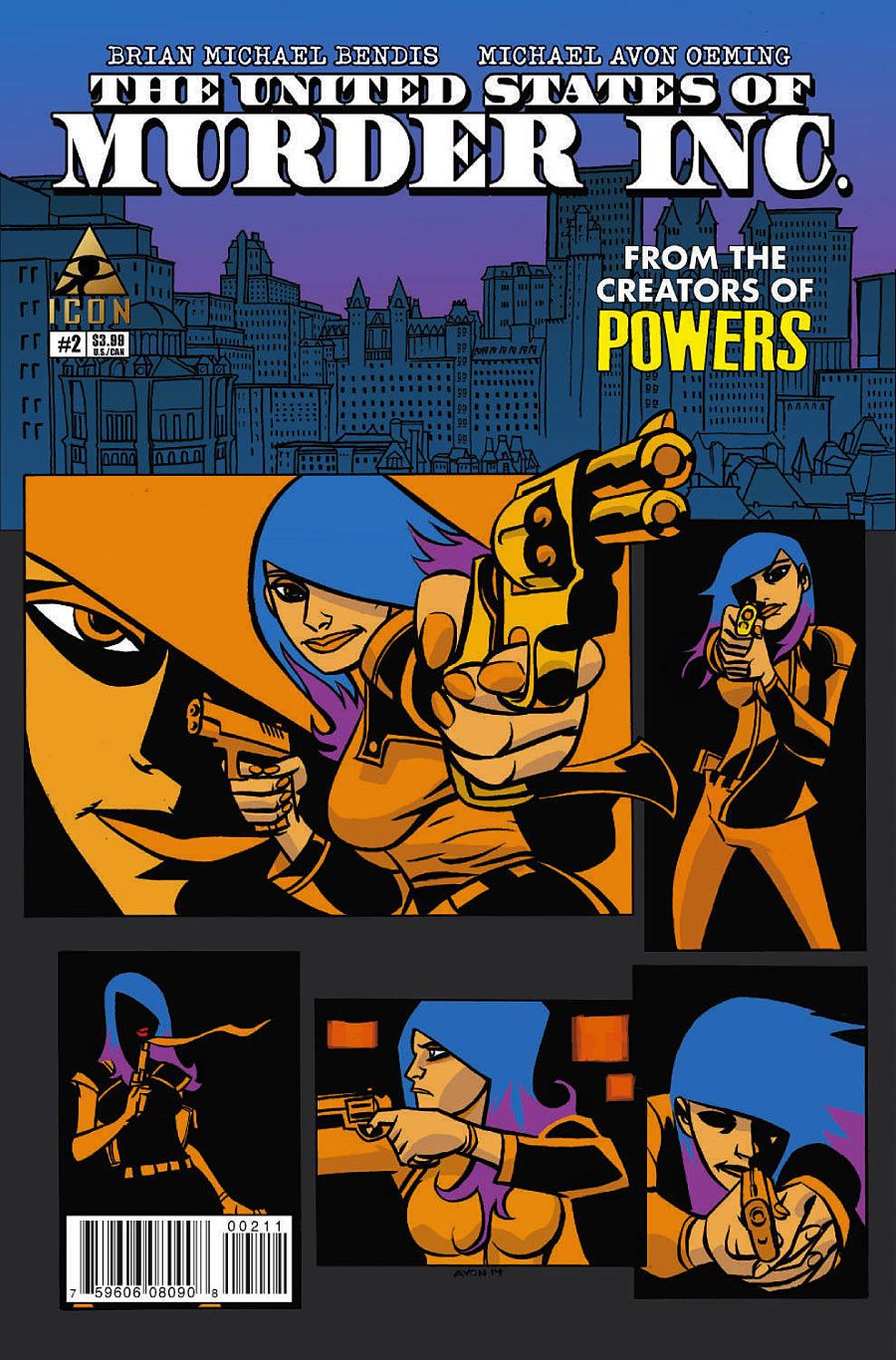Last issue, "Powers" collaborators Brian Michael Bendis and Michael Avon Oeming began to explore a world where organized crime families openly control part of the county in "The United States of Murder Inc." In the second issue, they begin to explore the origins of how organized crime got so out of hand. Bendis and Oeming haven't shown much outside the immediate sphere of the Gallo family, but the intrigue within and the glimpses of the nation without have been plenty enough to make this comic a tense and fascinating must-read in the span of two issues.
Both the macro world of a decidedly non-United States and the micro environment of the Gallo family dynamic as established by Bendis are each enough to carry this title on its own. The appeal for the former in this issue lies largely in the in the flashbacks going back half a century that show a connection between the family and significant real-life events of the day. These play into a couple of related and oft-discussed real-life conspiracy theories that are compelling enough to make readers ponder what they believe about actual historical events, despite the purely fictional nature of this comic. The story of young Valentine Gallo, though, is no less gripping, as this young man who has just begun to assume his role in the family empire still reels from the twin surprises thrown at him last issue.
One of these twists involve Valentine's mother, and Valentine doesn't necessarily react to this surprise as many might expect. This creates one of the more interesting sets of character interactions, and Valentine's torn allegiances amidst his own loyalty being questioned make for an interesting relationship between himself and the family don. There's also his ongoing sexual tension with Jagger Rose, one of the Gallo family's hired guns who's under similar suspicions from the family. If there's any lack of real assessment of the territory around the family that co-rules it, it's simply because Bendis has laid out plenty to cover within the walls of the family's own estate first.
Oeming's art is a little more revealing of the state of this quasi-union, although it shows just enough to let readers know that there some high-profile distinctions. Oeming's style is one of contrasting black and white and heavy use of shadow, but despite all of the outlines and silhouettes, everything is exactly as clear as it needs to be. The first-panel caption in the opening flashback reads "Years ago," but the cars and clothing as authentically rendered by Oeming show readers the era in question. Oeming's abstract, simplified faces brilliantly preserve the identity of one character in the sequence whose identity clicks with readers as exactly the right moment.
Colorist Taki Soma sleeps in until the fifth page, leaving the opening flashback as well as another later to be rendered solely in era-appropriate black and white. Soma still takes a minimal approach everywhere else; there are rarely more than three contrasting colors on any given page, and on most there are only two. Jagger is always shown in reds and pinks, the Gallo family members largely in yellow, except for Don Bonavese, whose mauve hues match those of most of the surrounding area he controls. Valentine's colors ironically change, perhaps in an acknowledgement to his conflicted emotions. Soma's single-digit color palette is strikingly effective, painting not only a general ambiance for the story but also embellishing the characters' personalities and allegiances.
Bendis keeps his tendency for verbosity in check, mostly, and his story is all that much tighter and all the better for it. "The United States of Murder, Inc." #2 is an excellent noir-ish, alternate-reality, poli-criminal thriller that's thought-provoking and full of superb character drama and interaction.

